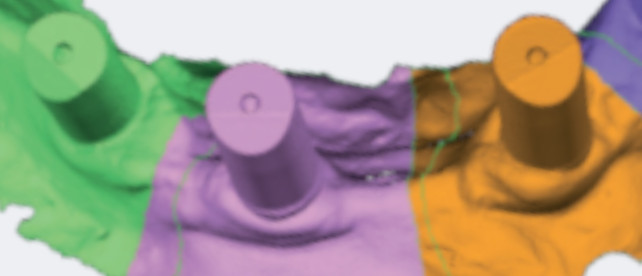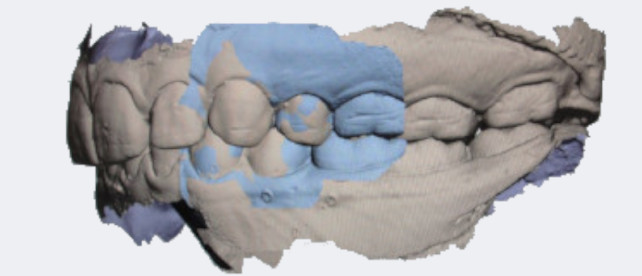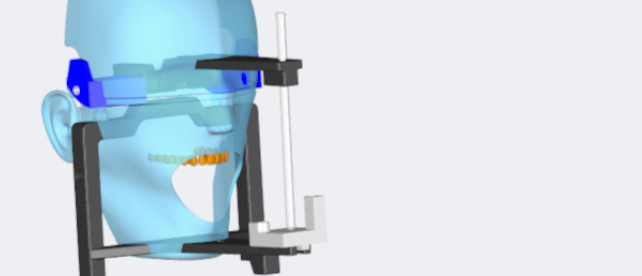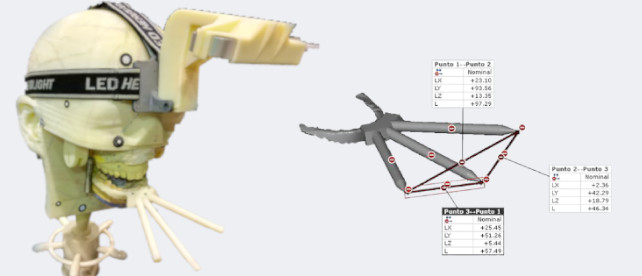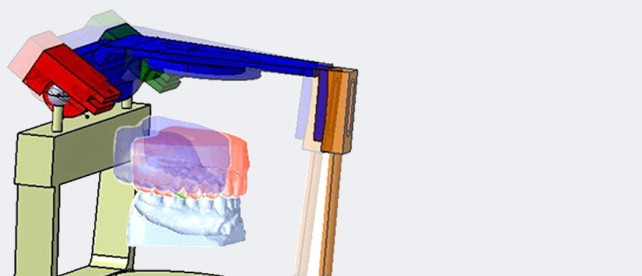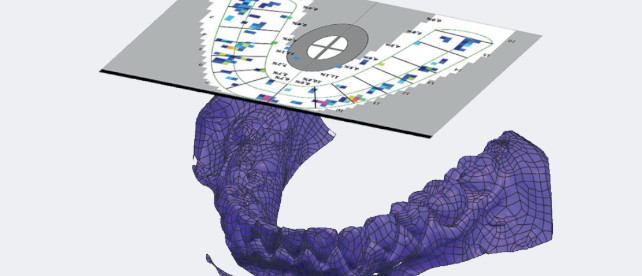3D dentistry
In prosthetic and restorative dentistry, due to technical and comfort reasons as well as to be able to predict the results, for the evaluation of the occlusion and for the elaboration of dental prosthesis and indirect dental restorations, the plaster replicas of the dental arches (plaster casts) of the patients are mounted on mechanical instruments called articulators. These mechanical articulators, according to The Glossary of Prosthodontic Terms (ninth edition), are mechanical instruments that represent the temporomandibular joints and jaws, to which maxillary and mandibular casts may be attached to simulate some or all mandibular movements. Over the years, as greater knowledge of anatomy, jaw movements and mechanical principles was acquired, mechanical articulators that simulated the jaw movements more accurately were developed. In order to simulate the jaw movements of each patient more accurately, these mechanical articulators are adjusted using different records taken from the patient such as the interocclusal records, the facebow record and the record of the mandibular kinematics (figure 1).
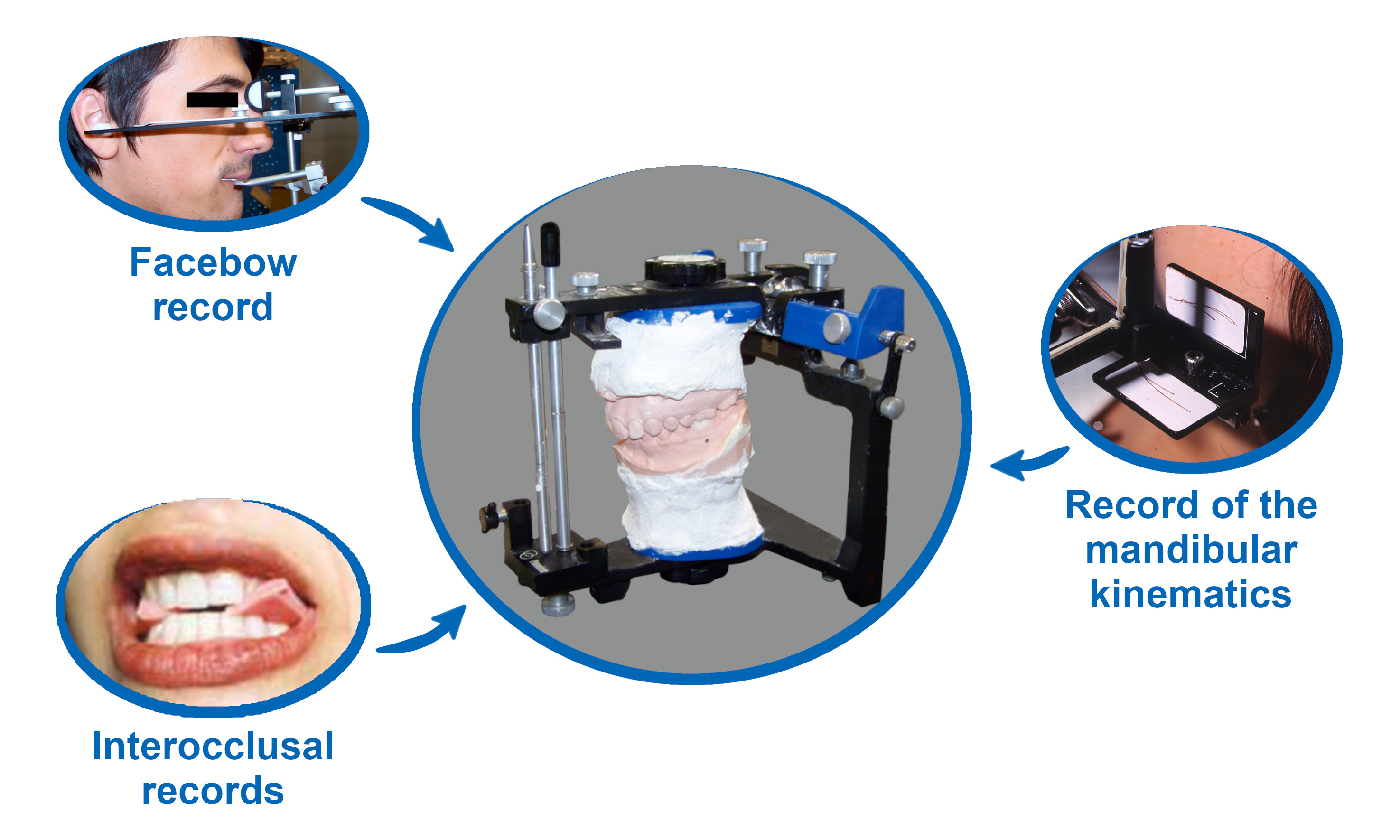
However, with the technological advances that have occurred in dentistry in recent years, these mechanical articulators are being replaced and/or supplemented by virtual articulators in dental computer-aided design and manufacturing (CAD/CAM) systems (figure 2). These virtual articulators, among others, present the following two advantages:
- They enable to perform a kinematic analysis of the occlusion
- They enable to correct in a kinematic way the dental prosthesis and indirect dental restorations statically designed using dental CAD/CAM systems
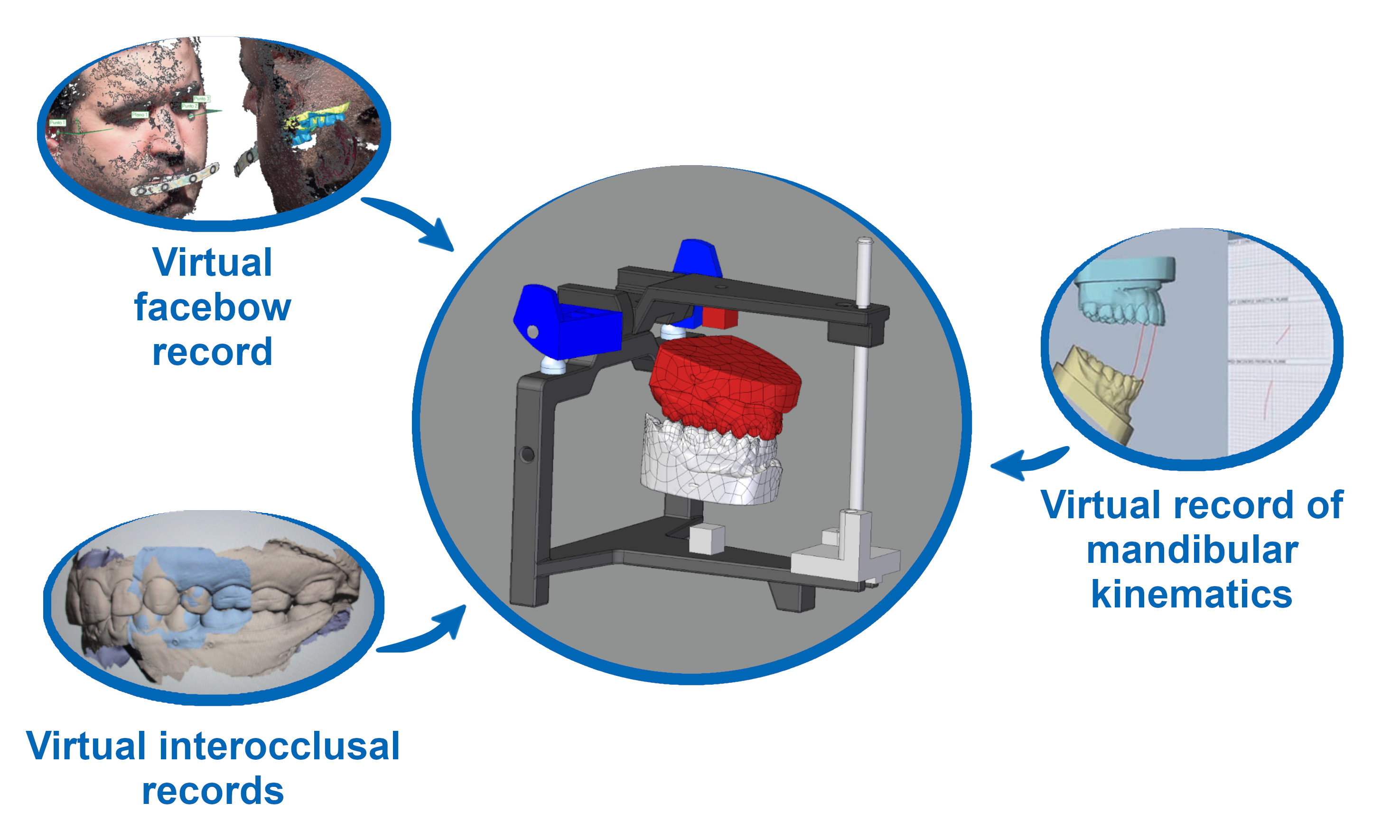
Thus, in order to carry out both the mounting of the digital replicas of the dental arches (digital impressions) and the adjustment of parameters in a personalized way in these virtual articulators, in the last few years’ processes and devices have been developed to take records of the patient in a virtual way.
Furthermore, since these articulators only allow a kinematic analysis of the occlusion, in order to perform a dynamic analysis of the occlusion in a virtual way, devices that allow the virtual recording of mandibular dynamics have been developed.
However, these procedures and devices of the digital dental workflow are relatively new and still under development. Therefore, within this research line, this group is working on the following six specific research lines:


